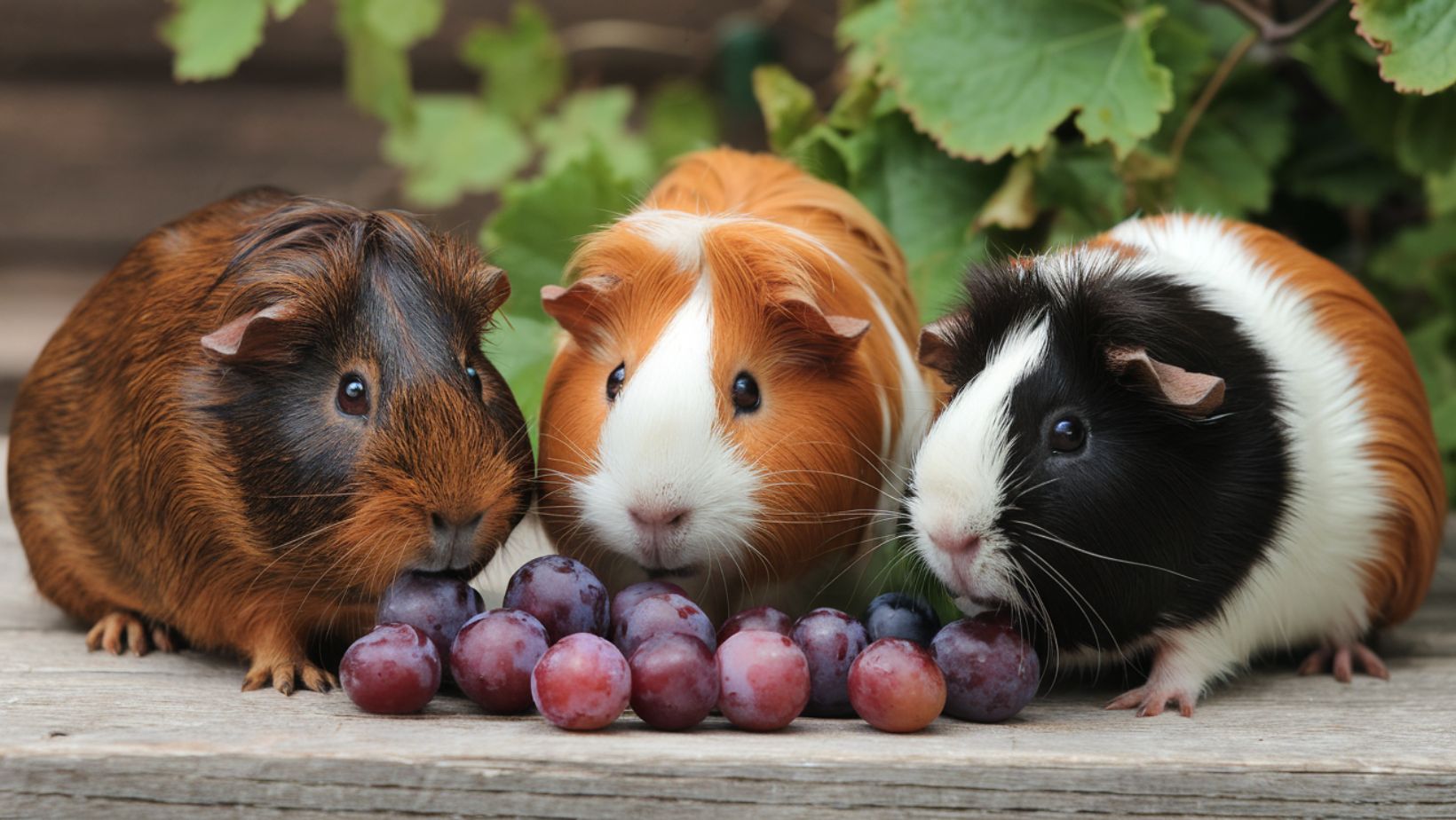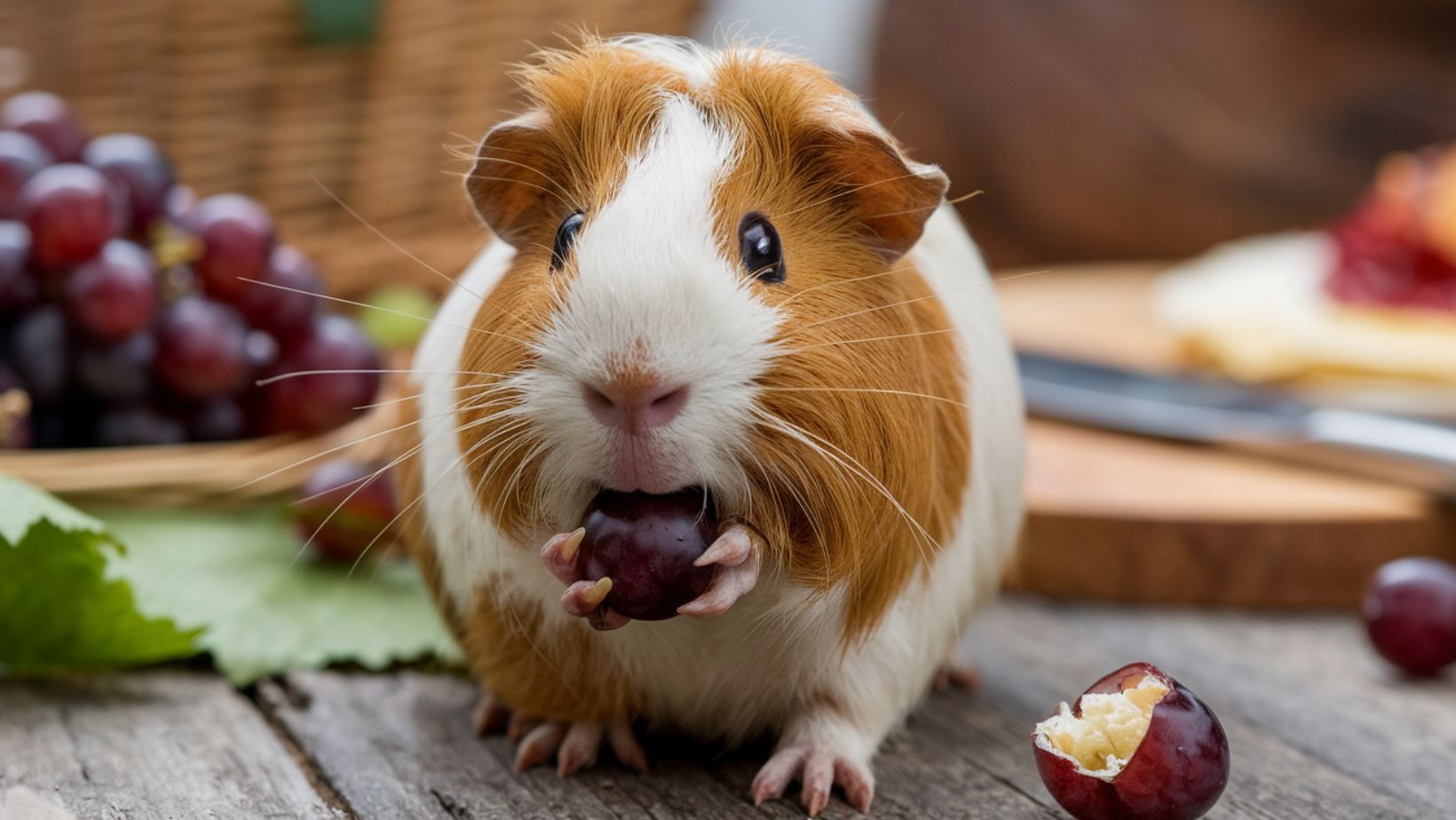When it comes to treating our guinea pig friends, grapes often catch our attention as a potential sweet snack. Understanding how to safely include these fruits in your pet’s diet is crucial for their health and happiness. Let’s explore everything you need to know about feeding grapes to your guinea pig.
Yes, your furry friend can enjoy grape treats!
Good news for pet parents – guinea pigs can indeed eat grapes! These sweet, juicy fruits can make an excellent occasional treat for your pet. However, it’s crucial to understand that grapes should be offered in very small amounts and less frequently than other fruits.
While most guinea pigs love their sweet taste, grapes contain more sugar than many other fruits, making portion control especially important. Think of grapes as a special dessert for your pet – something to be enjoyed occasionally rather than as a regular part of their diet.
Sweet little bites: Perfect portions for your piggy
When it comes to serving grapes to your guinea pig, size matters significantly. A single grape should be cut into quarters, and one quarter is plenty for a single serving. This might seem like a tiny amount, but it’s perfect for your pet’s small size and digestive system.
Offer grape treats no more than once or twice a week, and never on consecutive days. The key is to make these sweet treats special while avoiding overconsumption. Remember to wash grapes thoroughly before serving to remove any pesticides or residues, and always check for signs of mold or spoilage.
Nature’s candy brings some healthy benefits
While grapes are primarily a treat, they do offer some nutritional benefits for your guinea pig. They contain vitamin C, which is essential for your pet’s health since guinea pigs can’t produce this vitamin on their own. Grapes also provide small amounts of other vitamins and minerals, plus water content that can help with hydration. The skin of grapes contains beneficial antioxidants, and when properly prepared, can be included in the treat. However, these benefits don’t outweigh the need for moderation due to the high sugar content.
Getting started with grape treats
If you’re introducing grapes to your guinea pig for the first time, start even smaller than the recommended portion. Offer just a tiny piece (about one-eighth of a grape) and observe your pet’s reaction. Watch their behavior and droppings for the next 24 hours to ensure they digest it well. Every guinea pig is unique, and while most enjoy and tolerate grapes well, some might have more sensitive digestive systems. Pay attention to your pet’s individual response and adjust accordingly.
Choose the right grapes for your little friend
Not all grapes are created equal when it comes to treating your guinea pig. Seedless grapes are the safest choice, as they eliminate any choking hazard from seeds. Both green and red varieties are acceptable, though some guinea pigs show preferences for one over the other. Always choose fresh, firm grapes and avoid any that show signs of softening or mold.
Organic grapes are ideal if available, but regular grapes thoroughly washed are fine too. Never feed frozen, cooked, or processed grape products to your pet.
Making grape time a special experience
Turn grape-treat time into an enriching experience for your guinea pig. You can use small grape pieces as rewards during gentle handling sessions or hide them in safe food puzzles designed for guinea pigs. This not only makes the treat more exciting but also provides mental stimulation for your pet. Some owners find success in combining tiny grape pieces with regular vegetables to encourage picky eaters to try new foods.
Understanding grape limitations
Several factors determine whether your guinea pig should have grape treats. Age is important – young guinea pigs under six months should focus on their basic diet rather than sweet treats. Overweight piggies or those with diabetes or other health conditions might need to avoid grapes altogether. Senior guinea pigs might also need more restricted treats. Always consult with your veterinarian about treats if your pig has any health concerns or dietary restrictions.
Signs to watch when giving grape treats
After offering grape treats, observe your guinea pig for any changes in behavior or health.
Positive signs include normal activity levels and regular eating habits. However, watch for signs that might indicate the treats don’t agree with them, such as changes in droppings, decreased appetite for hay, or lethargy. If you notice any concerning changes, discontinue grape treats and consult your veterinarian if symptoms persist.
Balancing treats in your pig’s diet
Remember that treats, including grapes, should make up no more than 10% of your guinea pig’s daily diet. The majority should always be high-quality hay (about 80%), supplemented with fresh vegetables and a small amount of pellets. If you’re offering other fruits as treats, you’ll need to count grape portions as part of the overall fruit allowance. Consider creating a treat schedule to ensure you’re not exceeding recommended amounts across all treats.
Special considerations for grape treats
When it comes to seasonal considerations, grapes can be especially refreshing for your pet during warmer months due to their high water content. However, this also means they spoil quickly, so remove any uneaten pieces promptly. In cooler months, maintain the same small portions even if your pig seems to want more. Remember that consistency in treating is key for maintaining good digestive health.
By following these guidelines and paying attention to your pet’s individual needs and responses, you can safely make grape treats a delightful part of your guinea pig’s diet. Remember that moderation is crucial with these sweet treats, and the joy of seeing your pet enjoy them comes from knowing you’re providing them safely and responsibly.

